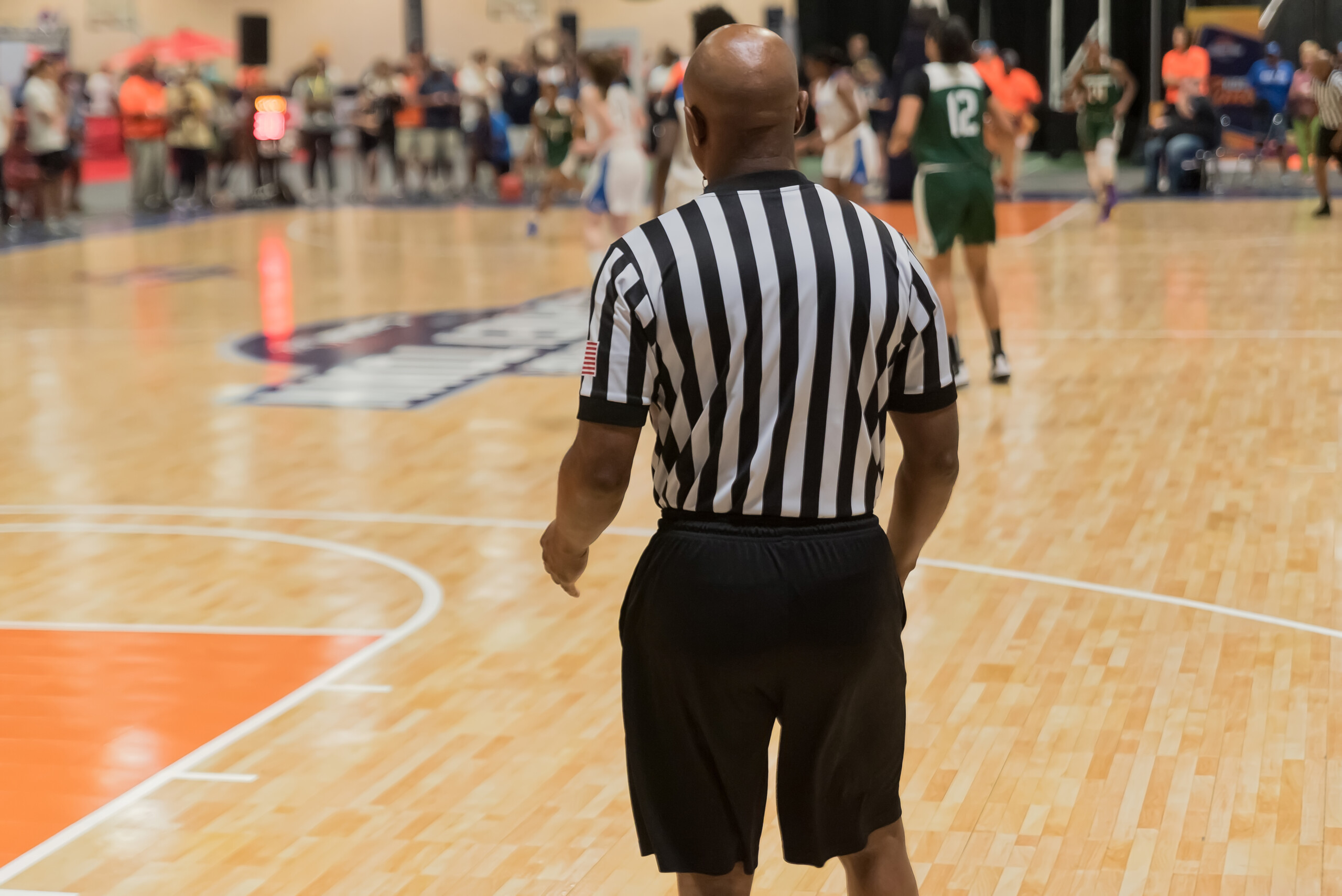Pioneering change: Inside Canada Basketball’s EDI Committee for officiating
February 14, 2024
SIRC’s Paula Baker sat down and interviewed the Canada Basketball team spearheading the organizations EDI strategies and advancement to share their innovations.
In recent years, Canada Basketball has embarked on a transformative journey towards equity, diversity, and inclusion (EDI), reflecting a commitment that goes beyond the court.
The genesis of this journey began a few years ago with Canada Basketball’s decision to put themselves out there, to ask questions and to take accountability. Recognizing these conversations are not easy, the organization sent out an EDI survey to all stakeholders in the Provincial and Territorial Sport Organizations (PTSOs) across the basketball landscape, including players, staff, directors, and executive directors. Through surveys and interviews, they uncovered both positive aspects and challenges related to race, ethnicity, and gender within the basketball community.
“We really wanted to hear what their experiences and perceptions were around inequities and especially around race, ethnicity and gender,” Rowan Barrett, Canada Basketball General Manager and Executive Vice President, explained. “And coming back, there were some tremendous bright spots and there were some acknowledged difficulties.”
Rowan admits as a national organization “they weren’t experts” in this area and instead hired a consultant to provide a safe space for feedback for the audit. Through this process the insights gained became the catalyst for change and Canada Basketball made the bold decision to fully embrace the key areas that emerged.
The 5 focus areas identified included:
- education and awareness
- balanced representation
- policies and procedures
- supplier diversity
- strategic partnerships
These areas formed the bedrock of Canada Basketball’s EDI initiatives. Each area aimed at addressing the multifaceted challenges present in the Canadian basketball ecosystem.
Addressing gaps and promoting inclusiveness

One of the significant offshoots of these initiatives was creating an EDI committee for basketball officials. Triggered by concerns voiced by officials about challenges within the officiating space, Canada Basketball responded by creating a committee focused on EDI.
This committee, now 16 members strong with representation across ethnicities, races, and gender across Canada, actively engages with challenges within officiating, and is working towards implementing the 14 prioritized recommendations outlined in the 2023 Canadian Basketball Officials Commission (CBOC) EDI report. Those 14 recommendations pinpoint areas for enhancing governance, training, development, selection processes, and system alignment. Overall, it aims to address gaps and disconnections between CBOC and Canada Basketball policies, ensuring a more inclusive and barrier-free officiating system in Canada.
CBOC, which was formed through the merger of the Canadian Association of Basketball Officials (CABO) and Canada Basketball, governs, and fosters the growth and development of basketball officiating in Canada, while actively working to create a positive culture for officials and eliminate barriers to equitable development opportunities.
From summits to educating, acting and inspiring
Using the same consultancy process with CBOC, systemic EDI gaps were identified within the sector, which led to the creation of the first Black Referee Summit during the GLOBL JAM in 2022.
“That summit opened the door for more discourse regarding race and barriers and how to eliminate them,” Moyo Omole, Canada Basketball EDI Manager and Chair of the Officials Commission EDI Committee, said. “After the 14 recommendations were put together, the EDI committee created, and the first Black officiating summit happened… out of that came the Diversity Officiating Summit in July 2023.”
The initiatives have resonated positively within the community, laying the groundwork and the trust for more work to be done. Omole along with James Buhlman, Manager of Officials Development for Canada Basketball, have been tasked with working with the council and CBOC stakeholders to action the 14 recommendations. While there have been successes, the landscape doesn’t come without its challenges.
“One of the things that is always going to be difficult for us in Canada, regardless of which sport or department you’re in, is our country is so large,” Buhlman said. “As Canada is so large, EDI will not look the same in all places. EDI needs to be an accurate reflection of the community where basketball is being played, for players, coaches, and officials. This may not look the same in Nova Scotia as it does in Quebec, Ontario or British Columbia.”
To tackle this, Buhlman says focusing on education and recommendations is important to create systems that support best practices. While there is policy at the NSO level, best practices can only be shared with provinces and local associations as they may have different governance models and structures. The road to diversity is continually changing and has no end, which is why there’s a need to rely on education. Barrett, Omole and Buhlman all expressed that the main goal is to make inclusivity a natural part of how we think, not just a choice.
The power of visibility

One way to make that happen is offering visibility since it can have a big impact on showing the possibilities. Research has shown that people are more likely to pursue something they see other people doing, who are like them, and this is especially true in roles like officiating. That visibility can inspire the next generation to see officiating as a reachable and attainable goal.
With that in mind, Buhlman said along with putting the recommendations into action, Canada Basketball is reaching out to schools. Knowing that early exposure matters, plans are in motion to have a few select officials connect with students to create a sense of potential and ambition among those who might not have thought about officiating before. The initiative aims to break stereotypes and encourage young individuals to consider officiating and coaching as a viable and rewarding career path.
More than a game
Canada Basketball’s journey towards equity, diversity, and inclusion shows a commitment to creating a positive impact on the lives of those involved in the sport.
“We have people from all over the sporting landscape and we’re getting all of their perspectives, which helps us as an organization,” Barrett said. “Whatever societal challenges are happening, we are getting a more varied and a more diverse voice to help us.”
And as the transparency and trust has been built, he said, “we’re noticing more people facing challenges and inequalities are reaching out to us, saying, ‘this is happening to me or others, what’s the plan, can you help?’ As a national organization, I’m clear on my role, but what’s the point of winning if we’re not addressing these issues? Victory doesn’t feel sweet when people around you are suffering. [As an organization], part of winning is making sure that you’re impacting the community, you’re impacting people, and standing as a leader in the basketball space to help.”
Barrett, Omole and Buhlman admit the journey toward diversity and inclusion is ongoing and complex. However, they are determined to learn, adapt, and evolve by continuing to actively engage with the community, implementing tangible policies, and fostering inclusivity at various levels in all basketball systems across Canada to achieve meaningful change.
About the Author(s)
Paula Baker, M.Sc., is the managing editor at SIRC. In this role, she draws on her 20 years of experience as a journalist, and as a former exercise physiologist, to bring sport research, knowledge, and the occasional human-interest story, to our readers.
The information presented in SIRC blogs and SIRCuit articles is accurate and reliable as of the date of publication. Developments that occur after the date of publication may impact the current accuracy of the information presented in a previously published blog or article.
